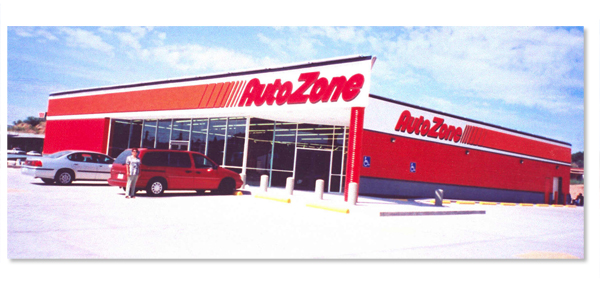For years now, the vast and beautiful landscape of our country has become more and more homogenized. Why does Maine have to look like Cincinnati? Why is it that more places are losing their unique identities or “sense of place” and looking more and more the same?
It started with this …

McDonald’s created the golden arches and they sprung up all across America and the world. Look at this map showing all of the McDonalds’ locations across the United States.

You can read all about this Here.
McDonalds was successful at branding itself and its image. It wasn’t long before others followed suit.
Hotels popped up everywhere.

Outlet Malls or “Factory Outlets” became in vogue all across the U.S. They were nothing more than themed strip centers but they have changed the face of our suburban landscape.

Auto parts stores grew like weeds side by side along our urban and suburban roads.

Perhaps worst of all – drugstores at every intersection. They pollute our major intersections everywhere, putting parking lots and ugly architecture front and center at so many traffic intersections across the American landscape.


Now, we have Starbucks and other drive throughs…

Dunkin’ Donuts …

and Panera Bread.

New ‘mixed use’ Town Centers have recently begun their assent across the American landscape. They have managed to combine all of these ‘upscale’ branded chains into centralized lovely “Main Street”-type settings, putting the pedestrian back on the sidewalks.
 Mayfaire Town Center, Wilmington, NC
Mayfaire Town Center, Wilmington, NC
 Bethesda Row, Bethesda, MD
Bethesda Row, Bethesda, MD
 Mercato, Naples, FL
Mercato, Naples, FL
Generally, they are large, well-designed and planned communities that combine mixed uses such as residential, commercial office space and retail shopping. Parks, landscaping, and outdoor promenades are incorporated to tie it all together in an urban streetscape-type setting. Hotels and corporate office buildings along with luxury townhomes and apartments and upscale “Charleston-style” single family residential neighborhoods are set in the surrounding areas. They are all connected by tree-lined streets and sidewalks. Large open, park-like gathering areas are mixed in to accommodate larger events such as boat shows and weekend concerts.
Finally, a setting where we are given the opportunity to live, work and recreate all within walking distance. Maybe there is hope, at least to put Americans back on the sidewalks instead of in the car.
However, I can’t help but lament all of this progress that has come at such great cost -- the loss of our regional sense of place or “genus loci.” Everything looks the same. How can we move forward and keep our unique regional spirit of place at the same time? This is a great challenge for all designers.

Hi, Pam - Thanks for stopping by my blog.
ReplyDeleteThis is an interesting subject you raise about homogenization of our cities and towns. I can see why cities find the town center mixed used developments appealing - they are attractive, walkable, etc. Kind of a sure bet for tax revenues. Yet, they all look alike. I was cruising through the photos you posted above. At first I thought that the Barnes and Noble featured was the one in Arlington. But, no, it was the one in Bethesda!
Hi Pam,
ReplyDeleteI got your long question and the only thing I can suggest in your dilemma is an on-line consult with me, it's impossible for me to make random suggestions that would really make a difference without looking at your house and your individual requirements. Email me for more info on what it looks like if you're interested.
Thanks for your comment!
x
Maria
I couldn't agree more! I first saw this successfully done in Highland Park, IL in the 90s. However, mixed use has become a four-letter word due to the incompetence of many politicians and city planners, trying to force mixed use into areas where it makes no sense.
ReplyDeleteMy husband is a (corporate) real estate lawyer and the powers-that-be in our neck of the woods insist on mixed use in areas where it would be surrounded by heavy retail and no residential or in the middle of a cornfield without enough base for it to make sense.
I volunteered in two communities on the Main Street, USA program and watched it work very successfully in one of the towns; the vision of those in charge of the other town caused it to basically fail.
Hope that made sense. I'm all tuckered out from all the Elvii. :-) I liked your post, though.
I guess it is a challenge to build true character into new construction..., depending on the budget.
ReplyDeleteI like the idea of planned communities (I'm Swiss after all and used to have everything within walking distance!), but the privacy factor is questionable to me. Some communities even stress how they built the balconies facing each other to encourage "getting to know your neighbor".
Just back from the Garden Writers symposium in Raleigh,and I find myself with similar thoughts. The amazing garden tours that were set up for us beautifully showcased the regional aspect of Raleigh and stretched my creativity in new ways. But looking out the bus window as we moved between tours, I could have been back home in California.
ReplyDeleteInteresting. Provocative. Just back from Brasil and Buenos Aires...I saw a McD's on every other corner there too (well not where we were in Brasil...but certainly BA. Not to mention Holiday Inn...Hooters...and on and on...
ReplyDeleteI was in a planned community here in FL. It was actually done kinda well (Celebration in Orlando) But was kind of creepy. Very homogenized (same age, same color)and while the houses were designed quite beautifully with big windows and porches...All of the blinds were closed. Everywhere. Guess they didn't like the windows facing windows idea!
SGZDFHZDF
ReplyDeleteIt truly is sad that there are mostly fast food restaurant everywhere nowadays. What happened to the mom and pop shop?
ReplyDelete